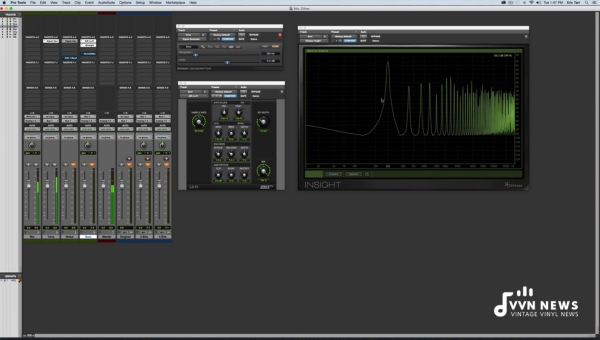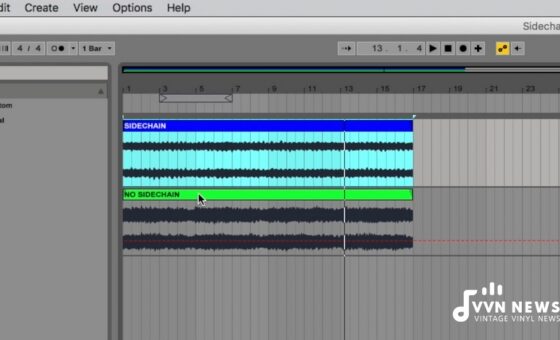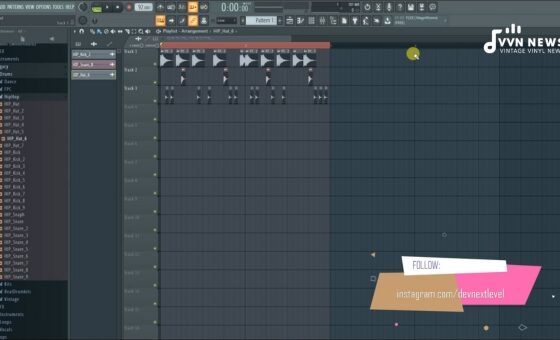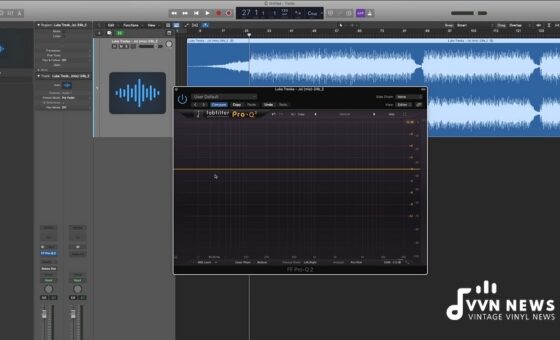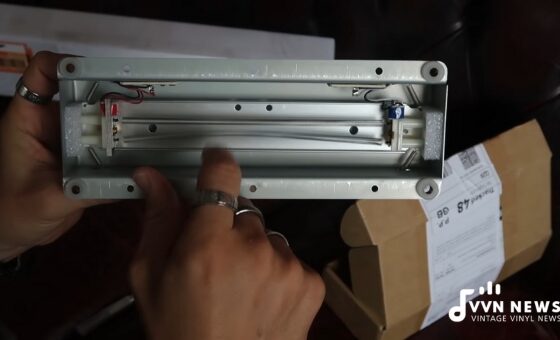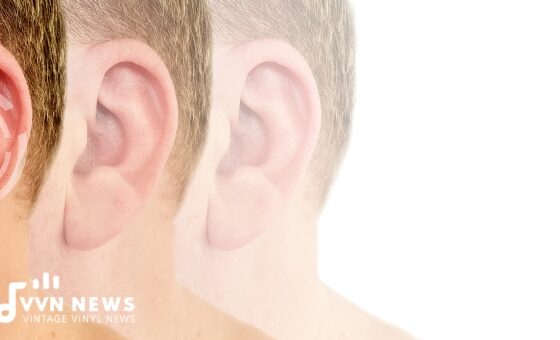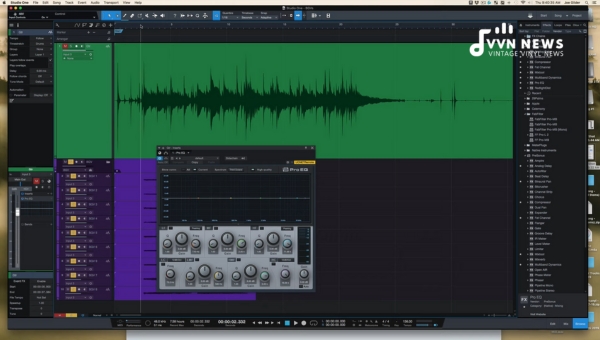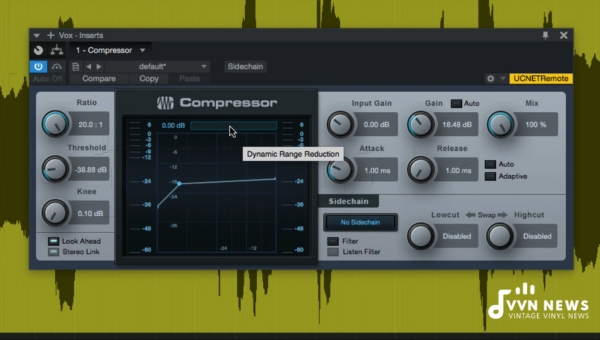Before diving headfirst into the realm of audio engineering, many folks ponder, “What is dithering in audio?” Well, let me shed some light on this fascinating aspect that often goes unnoticed yet holds great significance.
From music production to podcasting and even in film sound design, dithering in audio plays a vital role in delivering the best sound quality possible.
Despite being an unnoticed player behind the scenes, once you uncover what it entails, the importance of dithering becomes more evident.
It’s like an unsung hero working its magic within the intricate system of sound production. So let’s pull back this mysterious curtain together and enter the captivating world of dithering in audio.
What Is Dithering In Audio?
Dithering in audio is a form of noise, or rather, intentionally added low-level noise, that is used in the process of digital audio production.
It may seem confusing at first as to why anyone would intentionally add noise to an audio signal. Well, this apparent madness does have a method.
The foundation of its utility lies in the way digital audio works. While recording or creating digital audio, we often have to reduce the bit depth of an audio file – which essentially means decreasing its quality.
This reduction can lead to distortion or alter the true original sound resulting in undesirable tones or distortion — this is where dithering steps in.
It’s a technique used during lower bit-depth conversions that helps prevent the introduction of such harsh artifacts, known as quantization error and distortion.
The noise introduced through dithering effectively masks these unwanted distortions improving overall sound quality.
Moreover, this creative use of noise promotes delicacy within sounds that would otherwise be lost during the reduction process.
So while we may perceive it as simply ‘noise’, dithering serves as an umbrella against harsh sonic rain occurring due to reduction truly painting a masterpiece out of apparent chaos.
Importance of Dithering in Audio Processing
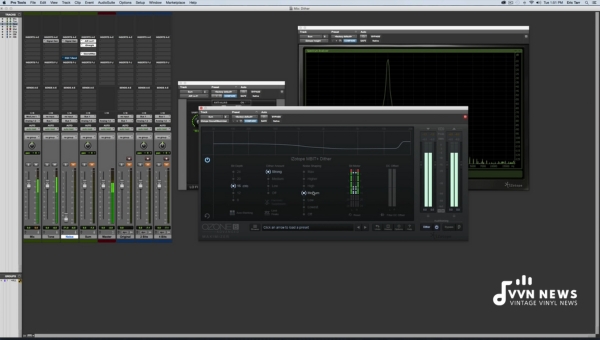
Dithering in audio processing helps to eliminate unwanted distortion, making it indispensable in producing high-quality audio.
Here are some points that highlight its significance:
- Noise Shaping: Dithering contributes to a phenomenon called noise shaping. It strategically distributes the ‘noise’ so it’s less noticeable, typically pushing the noise into frequency ranges where our ears are less sensitive.
- Removing Quantization Distortion: Quantization is an essential process during digital audio production. However, it generates quantization distortion – an audible and unwanted artifact. Dithering helps combat this by minimizing its overall impact.
- Preserving Audio Details: Crucially, dithering aids in preserving the delicate details of an audio recording during the transition from a high bit depth to a lower one.
- Transitions between Quiet Passages: Without dithering, silent or quiet sections of digital audio can sound unnaturally abrupt or may even include audible distortions known as “artifacts.” Dithering blends these transitions more smoothly.
By understanding these points, one can start appreciating why dithering serves as a crucial tool for audio engineers and composers worldwide.
Even if you’re just dabbling in podcast editing or amateur music production, knowing about dither may be your secret weapon for enhanced sound quality.
Also Read: 15 Best DAW In 2025 [Top Digital Audio Workstations]
Quantization, Quantization Noise, and Quantization Distortion
Let’s dive a bit deeper into the pillars that construct the facet of dithering in audio: Quantization, Quantization Noise, and Quantization Distortion.
Although the terminology seems intimidating at first glance, simplifying these concepts will create a clearer path to understanding dithering.
What is Quantization?
Quantization is a process that involves converting continuous analog signals into digital, making them suitable for digital audio formats like CDs, MP3s, or streaming platforms.
For an audio signal to turn into a format we can store or transmit digitally, we have to chop it up into “quantized” bits. A key point to note here is the bit depth – the image it as the quality level of this conversion from analog to digital.
Understanding Quantization Noise
With our newfound knowledge of quantization, we can now progress to understanding quantization noise, an inevitable byproduct of the quantization process.
Each time when an analog signal is converted to digital, it causes a slight alteration or error, giving birth to quantization noise. This ‘error’, while minor, accumulates over time, adding a layer of subtle noise to our audio signal.
If we picture the process with a cooking analogy, it’s like chopping vegetables into smaller parts; no matter how careful you are, there will always be tiny particles or scraps leftovers.
Delving into Quantization Distortion
Finally, we tackle quantization distortion. Also known as quantizing errors or noise distortion this is when our audio signal looks or sounds different than its original form after the quantization process.
Distortion occurs as a result of these micro-errors during conversion.
Let me make it simpler for you to think about old video games with blocky graphics. Are those chunky blocks causing the lack of smooth curves? That’s similar to quantization distortion in audio signals!
Speaking in terms of digital audio signals, the greater your bit depth (number of ‘bits’ available for chopping), the less distinguishable this distortion will be.
By unearthing these terms and concepts related to dithering in audio, we can better appreciate its role in shaping our auditory experiences in everyday life.
Dithering aids us in minimizing the impact of this quantization noise and distortion arising from converting continuous sounds into digital formats refining our acoustic voyage.
Exploring the Various Types of Dithering
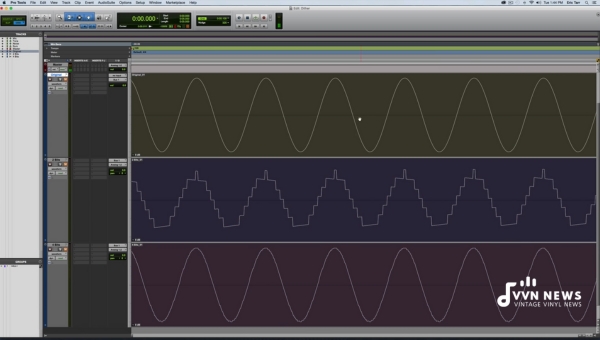
In the audio world, you’ll come across various types of dithering – each possessing its distinct features and characteristics.
Among these diverse types, the three main ones that hold prominence are called TypSe 1, Type 2, and Type 3 POW-r (Psychoacoustically Optimized Wordlength Reduction) Dithering.
Let’s delve into what each type brings to your sonic table.
Type I POW-r Dithering
Type 1 POW-r Dithering or ‘Type I’ as it’s commonly referred to in certain channels, employs a form of noise-shaped dither.
This essentially means that the noise added to the signal isn’t uniformly spread across all frequencies but rather is ‘shaped’ in such a way that it becomes less perceptible to our ears.
This type focuses on providing optimum performance for the highest stereophony, spaciousness, and depth perception.
What does this mean for your ears? It denotes an enhanced stereo effect or sound localization – blessing your auditory senses with clearer sound imagery.
Type II POW-r Dithering
Moving forward, we arrive at ‘Type II’ POW-r Dithering. Similar to ‘Type I’, this too applies noise-shaped dither however its primary aim is in preserving the absolute timbral accuracy along a wider range of operating levels compared to ‘Type I’.
In layman’s terms, it focuses on upholding true tonal quality or musical color over changing levels of audio signals. So consider ‘Type II’ as your trusty knight ensuring accurate tonal rendering amidst chaotic digital conversions!
Type III POW-r Dithering
Type III POW-r Dithering also employs noise-shaped dither like its predecessors, ‘Type III’ shines particularly when biased toward the lowest possible noise modulation and greatest consistency of timbre.
To carry forward the analogy used earlier: if ‘Type I’ was an artist painting detailed stereo images and ‘Type II’ a knight upholding tonal quality; visualize ‘Type III’ as an anchor holding steady amidst turbulent waves – ensuring minimal fluctuations in background noise during quiet recording phases.
These three types offer different attributes and one may opt for any based on their specific requirements from audio mastering or converting processes.
From observing these variations closely, we’re able to discern that there isn’t one blanket solution i.e., there isn’t a universal dithering type suitable for all situations.
The landscape remains varied and choosing among these primarily depends on the nature of the material you’re dealing with – be it music production or podcast editing.
Also Read: 25 Bestselling Artists Of All Time [Musical Icons That Broke Records]
Step-by-Step Guide On How to Apply Dithering
As we have dived into the world of dithering in audio, and deepened our understanding of what it is and why it’s crucial, let me guide you through a simplified, step-by-step process of how to apply dithering.
Complete Your Mix
First and foremost, ensure that your audio mix is complete and at its best quality.
This could include steps like balancing the volumes of different parts, applying necessary equalization (EQ), compressions, or other effects.
Dithering is not a magic wand solution for poor mixing or mastering – it embraces good work and elevates it further!
Prepare for Bit Reduction
In most Digital Audio Workstations (DAWs), the standard working bit depth is usually 24 or 32 bits.
For platforms like CDs or most music streaming services need files in 16-bit depth. We get ready to convert our high-quality audio mixdown from its high bit-depth down to this lower format.
Identify the Dithering Option
In your DAW software, there should be an option to apply dithering during this down-conversion process from high-bit depth to low-bit depth file formats.
For instance, on Logic Pro X you would use Bounce Project or Section, then within its dialogue box choose a destination file type requiring a down-conversion with the added term ‘dither’.
Choose the Right Type of Dither
Different types of dithering techniques will produce subtly different results and choosing the right one for your specific audio file can matter.
For example, POW-r dithering provides several options — POW-r 1 (for simple programs), POW-r 2 (for complex programs and high-heated sounds), and POW-r 3 (for complex, very high heated sounds). Understanding your audio file will help you make a more informed decision.
Apply the Dither
Once you have chosen your required type of dither, go ahead and apply it. This step reaps benefits when executed with caution as applying too little or too much dither could lead to a lackluster result.
Do not be discouraged if you do not get it perfectly right on your first try – mastering the art of dithering takes time and practice!
Review Audio
After successfully applying dithering to an audio file, listen to the output! Be sure to use good quality headphones or speakers to be able to catch any issues or discrepancies from the original sound. If something sounds off, return to previous steps and amend as necessary.
Also Read: What Is Audio Clipping? [Digital Clipping Vs Analog Clipping]
FAQ About Dithering
What is dithering in audio?
Dithering in audio is the addition of low-level noise to a signal during the reduction of bit depth, masking undesirable distortions and improving overall sound quality.
Why is dithering important in digital audio?
Dithering is crucial as it masks quantization noise that arises during the process of converting analog sounds into digital formats, thereby enhancing audio quality.
What is meant by ‘quantization’ in audio processing?
Quantization is the process involved in converting continuous analog signals into digital bits suitable for storage or transmission.
How does adding noise through dithering improve sound quality?
The low-level noise introduced through dithering blends with and masks quantization errors that would otherwise cause distortions, creating a smoother and more natural-sounding output.
Can I hear the difference when dithering is applied to an audio signal?
It’s typically hard to discern the difference in casual listening. However, professional listeners and audiophiles may notice a subtle enhancement in sound clarity with sophisticated ear gear.
Conclusion
Dithering in audio is a critical technique used in sound engineering to manage the byproducts of quantizing audio signals.
Quantization, as we’ve learned, gives way to noise and distortion that can negatively impact overall sound quality.
Through the careful application of dithering, these imperfections can be masked effectively. Whether you’re an audiophile or not, it’s intriguing to discover how much thought, strategy, and science go behind creating the sounds that fill our lives daily.
The next time you listen to your favorite song or podcast episode, take a moment to think about Dithering’s magical touch making your audio experience better!
